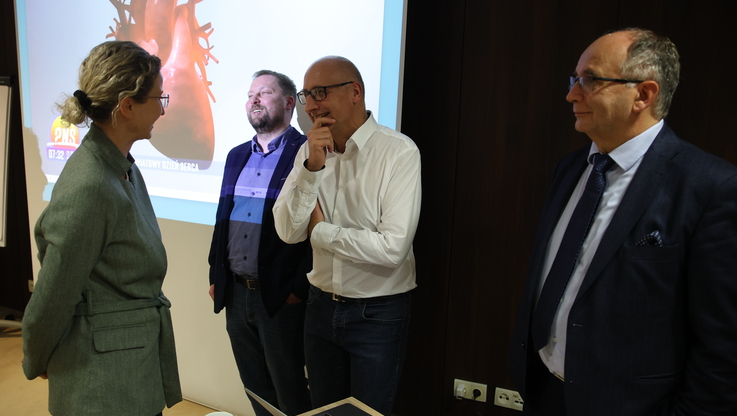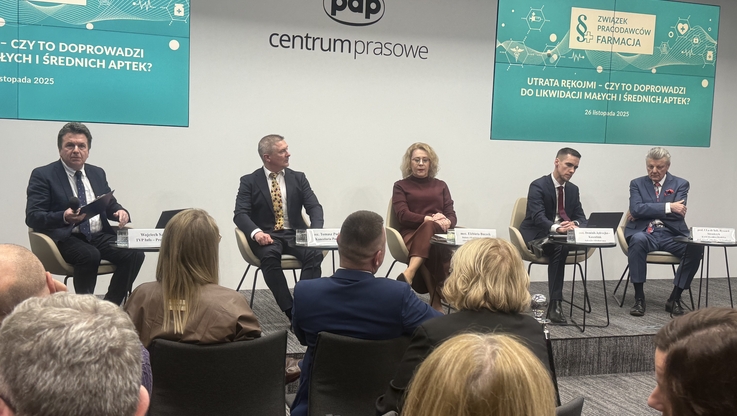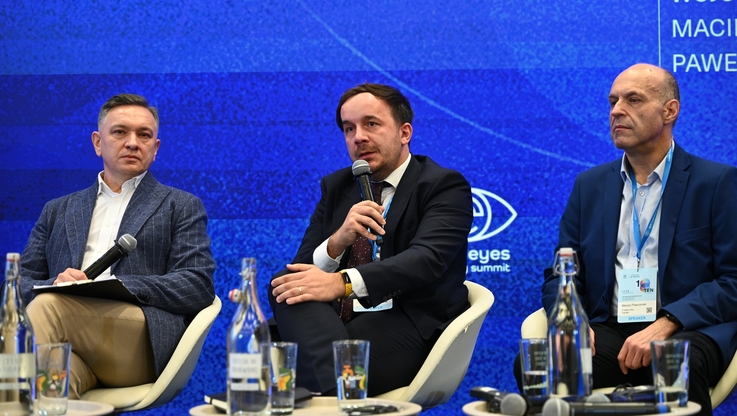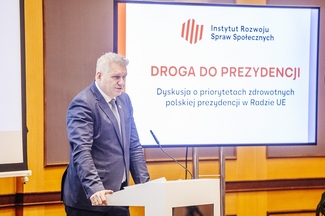Pobierz materiał i Publikuj za darmo
Podstawa prawna: Art. 17 ust. 1 MAR - informacje poufne.
ORLEN S.A. ("Spółka") ogłasza Strategię Grupy ORLEN do 2035 roku ("Strategia") pod hasłem "Energia jutra zaczyna się dziś". Skuteczne wdrożenie inicjatyw strategicznych pozwoli na transformację Grupy ORLEN w kierunku zintegrowanej, zdywersyfikowanej i odpornej na cykle gospodarcze organizacji. Ambicją Grupy ORLEN jest zapewnienie stabilnego tempa wzrostu zysku operacyjnego i regularnej wypłaty rosnącej dywidendy.
Strategia "Energia jutra zaczyna się dziś" zbudowana jest na dwóch fundamentach:
• Dekarbonizacja aktywów i transformacja energetyczna rozumiana jako prowadzenie zrównoważonej działalności i budowanie zrównoważonego portfela aktywów;
• Ład korporacyjny budujący zintegrowaną, spójną i cyfrową organizację, prowadzący do jednolitej struktury organizacyjnej Grupy ORLEN.
Realizacja Strategii "Energia jutra zaczyna się dziś" oparta jest na czterech filarach:
• Maksymalizacja wartości - realizacja inwestycji w aktywa o najwyższym potencjale zwrotu, finansujące transformację energetyczną;
• Innowacyjne i zrównoważone portfolio produktów - rozwój nowych produktów i linii biznesowych napędzających transformację energetyczną w regionie i inwestycje w niskoemisyjne innowacje;
• Optymalizacja aktywów - optymalizacja portfela aktywów w celu zapewnienia ich strategicznego dopasowania i pozytywnych wyników finansowych;
• Zarządzanie kapitałem - zdyscyplinowane podejście do zarządzania nakładami inwestycyjnymi oraz rozwój partnerstw biznesowych w celu ograniczenia ryzyka inwestycyjnego.
Strategiczną ambicją ORLEN jest:
• Zapewnienie stabilnego tempa wzrostu zysku operacyjnego EBITDA LIFO od 53 do 58 mld PLN w 2035 roku. Skumulowany zysk operacyjny EBITDA LIFO w latach 2025-2035 wyniesie od 500 do 550 mld PLN.
• Regularne dzielenie się wynikami finansowymi z akcjonariuszami w postaci dywidendy. Progresywna polityka dywidendowa zakłada coroczny wzrost dywidendy gwarantowanej o 0,15 PLN na jedną akcję. Poziom dywidendy gwarantowanej w 2025 roku zostanie podwyższony z 4,30 do 4,50 PLN na jedną akcję. Zarząd może zarekomendować wypłatę wyższej dywidendy, do poziomu 25% przepływów z działalności operacyjnej w danym roku pomniejszonych o koszty finansowania.
Grupa ORLEN przyjęła kryteria alokacji kapitału dla projektów inwestycyjnych uwzględniające minimalne stopy zwrotu w podziale na linie biznesowe oraz zróżnicowane pod kątem wpływu na emisje dwutlenku węgla. W latach 2025-2035 Grupa ORLEN planuje nakłady inwestycyjne związane z:
• działalnością o charakterze regulowanym (sieci dystrybucyjne energii elektrycznej i gazu) - ponad 60 mld PLN
• utrzymaniem aktywów operacyjnych - od 77 do 88 mld PLN
• rozwojem - od 132 do 143 mld PLN
• potencjalnymi inwestycjami kapitałowymi (M_A i partnerstwa) - do 85 mld PLN.
Skumulowane nakłady inwestycyjne z uwzględnieniem inwestycji kapitałowych w latach 2025-2035 mogą wynieść od 350 do 380 mld PLN, z czego od 270 do 290 mld PLN stanowią nakłady o elastycznym charakterze, umożliwiając Spółce aktywne zarządzanie budżetem inwestycyjnym.
W perspektywie do 2030 roku Spółka planuje utrzymanie wskaźnika zadłużenia dług netto/EBITDA na poziomie nie wyższym niż 2,0 zakładając realizację założeń makroekonomicznych, projekcji budżetowych oraz całkowitych planowanych nakładów inwestycyjnych. Po 2030 roku i realizacji planowanych nakładów inwestycyjnych Spółka oczekuje dodatnich przepływów pieniężnych oraz stopniowego zmniejszania wskaźnika zadłużenia dług netto/ EBITDA do poziomu nie wyższego niż 0,5 w 2035 roku.
Na podstawie kluczowych trendów rynkowych Spółka wyznaczyła główne kierunki transformacji, które realizowane będą w ramach nowej struktury organizacyjnej i operacyjnej.
Segment Kluczowy trend i kierunek rozwoju Główne cele operacyjne do 2035 roku
Upstream _ Supply
Poszukiwanie i wydobycie węglowodorów, obrót hurtowy ropą naftową i gazem ziemnym
Kluczowa rola gazu jako paliwa przejściowego.
Zapewnienie dostaw nośników energii umożliwiających długoterminowy rozwój gospodarki i bezpieczeństwo energetyczne. - wzrost produkcji gazu ziemnego z 9,1 do 12 mld m3 rocznie,
- zapewnienie elastycznego portfela kontraktów LNG i wzrost zakontraktowania z 4,8 do 15 mld m3 LNG rocznie,
- zbudowanie zdolności w zakresie usług wychwytu, transportu i magazynowania do 4 mln ton CO2 rocznie.
Downstream
Produkcja rafineryjna i petrochemiczna, obrót hurtowy produktami rafineryjnymi i petrochemicznymi
Dekarbonizacja transportu w połączeniu z utrzymującym się popytem na paliwa płynne.
Transformacja koszyka paliw Grupy ORLEN w kierunku większego udziału energii odnawialnej w transporcie. - wzrost udziału energii odnawialnej w koszyku paliw ORLEN z 8,5% do poziomu ponad 25%,
- wykorzystywanie 210 tys. ton rocznie wodoru niskoemisyjnego i odnawialnego w produkcji rafineryjnej,
- zwiększenie udziału w sprzedaży produktów petrochemicznych opartych o surowce odnawialne i o obiegu zamkniętym o 9 p.p. do poziomu 10% oraz polimerów i innych pochodnych o 7 p.p. do poziomu 70%,
- zwiększenie mocy produkcyjnych recyklingu z 35 do 250 tys. ton rocznie.
Energy
Wytwarzanie energii elektrycznej i cieplnej, dystrybucja energii elektrycznej i gazu ziemnego, handel energią elektryczną
Zapotrzebowanie na zeroemisyjne źródła energii.
Wspieranie dekarbonizacji sektora energetycznego poprzez inwestycje w OZE, magazyny energii, SMR i CCGT. - wzrost mocy zainstalowanej w OZE z 1,3 do 12,8 GW poprzez rozwój energetyki wiatrowej i fotowoltaiki, w tym w partnerstwach
- rozwój do 1,4 GW mocy zainstalowanej magazynów energii (BESS),
- rozbudowa mocy zainstalowanej w elektrowniach i elektrociepłowniach opalanych gazem (CCGT) z 1,8 do 4,3 GW,
- wprowadzenie na rynek i wdrożenie technologii Małych Reaktorów Modułowych (SMR) o mocy zainstalowanej rzędu 0,6 GW,
- przeznaczenie ponad 20 mld PLN na sieci dystrybucji gazu i 40 mld PLN na sieci dystrybucji energii elektrycznej.
Consumers _ Products
Sprzedaż detaliczna paliw, energii elektrycznej i gazu ziemnego, pozostałe usługi dla klientów detalicznych
Orientacja na klienta, który potrzebuje dostępnej i przystępnej cenowo energii.
Integracja i cyfryzacja usług dla konsumenta. - wzrost udziału w krajowym rynku energii elektrycznej dla samochodów elektrycznych o 22 p.p. do poziomu 33%,
- rozbudowa krajowej sieci punktów ultraszybkiego ładowania prądem stałym o 5,8 tys. punktów,
- podwojenie liczby aktywnych użytkowników systemu VITAY do 10 mln użytkowników.
Realizując cele Strategii "Energia jutra zaczyna się dziś" Spółka będzie stosować pragmatyczne podejście do dekarbonizacji aktywów i transformacji energetycznej Grupy ORLEN.
Do 2035 roku względem bazowego 2019 roku Spółka zamierza:
• ograniczyć emisje dwutlenku węgla w ujęciu absolutnym o 25% w segmentach Upstream _ Supply oraz Downstream w zakresach 1 i 2, do poziomu 12,5 mln ton CO2e
• zredukować intensywność emisji dwutlenku węgla w segmencie Energy o 55%, do poziomu 170 kg CO2e/MWh,
• obniżyć intensywność emisji dwutlenku węgla (NCI) o 15%, do poziomu 67 g CO2e/MJ.
Dodatkowo, do końca 2030 roku planowane jest zakończenie produkcji energii elektrycznej z węgla, natomiast do 2035 roku pełne odejście od produkcji energii z aktywów węglowych w ciepłownictwie. W efekcie Spółka podtrzymuje cel osiągnięcia neutralności emisyjnej w 2050 roku dla zakresów 1, 2, 3 zgodnie z Porozumieniem paryskim.
Strategia ORLEN S.A. została przyjęta przez Zarząd Spółki w dniu 8 stycznia 2025 roku, decyzja ta została uznana za informację poufną, której publikację Spółka opóźniła do czasu podjęcia decyzji przez Radę Nadzorczą Spółki, zgodnie z Art. 17 ust. 4 Rozporządzenia Parlamentu Europejskiego i Rady (UE) nr 596/2014 z dnia 16 kwietnia 2014 roku w sprawie nadużyć na rynku (rozporządzenie w sprawie nadużyć na rynku) oraz uchylające dyrektywę 2003/6/WE Parlamentu Europejskiego i Rady i dyrektywy Komisji 2003/124/WE, 2003/125/WE i 2004/72/WE.
Więcej na: http://biznes.pap.pl/pl/reports/espi/all,0,0,0,1
kom espi zdz
ORLEN Group Strategy to 2035 with new dividend policyRegulatory
announcement no 1/2025 dated 9 January 2025ORLEN S.A. (the
"Company") announces the ORLEN Group strategy till 2035 (the "Strategy")
_#8216;The Energy of Tomorrow Starts Today'. Successful implementation of the
strategic initiatives will allow the ORLEN Group to transform itself
towards an integrated, diversified and cycle-resilient organization.
ORLEN Group's ambition is to ensure a stable growth rate of operating
profit and regular payment of increasing dividends._#8216;The Energy
of Tomorrow Starts Today' Strategy is built on two foundations:•
Asset decarbonization and energy transition understood as running a
sustainable business and building a sustainable portfolio of assets;•
Corporate governance supporting integrated, coherent, and digital
organization, leading to a unified organizational structure of the ORLEN
Group.Implementation of the _#8216;The Energy of Tomorrow Starts
Today' Strategy is based on four pillars:• Value
maximization - investments in assets with the highest return potential,
financing the energy transition;• Innovative and sustainable product
portfolio - development of new products and business lines driving the
energy transition in the region, along with investments in low-carbon
innovations.• Asset optimization - optimization of the asset
portfolio to ensure its strategic alignment and positive financial
performance.• Capital stewardship - disciplined approach to managing
capital expenditures and fostering business partnerships to mitigate
investment risks.ORLEN's strategic ambition is to:•
Ensure stable growth rate of EBITDA LIFO operating profit of PLN 53
billion to PLN 58 billion in 2035. The cumulative EBITDA LIFO operating
profit for the years 2025-2035 will range from PLN 500 billion to PLN
550 billion;• Regularly share profits with shareholders through
dividends. Progressive dividend policy is aimed at annual increase in
the guaranteed dividend of PLN 0.15 per share. The level of the
guaranteed dividend in 2025 will be increased from PLN 4.30 to PLN 4.50
per share. The Management Board may recommend the payment of a higher
dividend of up to 25% of the operating cash flow for the year, less
financing costs.The ORLEN Group adopted capital allocation
criteria including hurdle rates for investment projects differentiated
by business line and their impact on carbon emissions. Over the
2025-2035 Strategy horizon, the ORLEN Group plans capital expenditures
related to:• activities in regulated businesses (electricity and gas
distribution networks) - over PLN 60 billion• maintenance of
operational assets - from PLN 77 billion to PLN 88 billion•
development - from PLN 132 billion to PLN 143 billion•
potential equity investments (M_amp;A and partnerships) - up to PLN 85
billion.Cumulative capital expenditures, including equity
investments, in the years 2025-2035 may range from PLN 350 billion PLN
to PLN 380 billion, of which between PLN 270 billion and PLN 290 billion
is of a flexible nature allowing Company to actively manage investment
budget.By 2030, the Company plans to maintain a net debt/EBITDA
ratio at a level not exceeding 2.0, assuming the fulfillment of
macroeconomic assumptions, budget projections, and total planned capital
expenditures. After 2030, following the execution of planned
investments, the Company expects positive cash flows and a gradual
reduction of the net debt/EBITDA ratio to a level not exceeding 0.5 by
2035.Based
on key market trends, the Company has set out the main transformation
directions that will be implemented under the new organizational and
operational structure.Segment Key trend anddirection of
development Key operational objectives by 2035Upstream _amp; SupplyExploration
for and production of hydrocarbons, wholesale trade of crude oil and
natural gas The key role of natural gas as a transition fuel.Ensuring
the supply of energy carriers that enable the long-term development of
the economy and energy security. - an increase in natural gas production
from 9.1 to 12 bcm per year,- maintaining a flexible LNG contract
portfolio and increasing contracting from 4.8 to 15 bcm of LNG per year,-
building capacity for capture, transport and storage services up to 4
million tonnes of CO2 per year.DownstreamRefinery and
petrochemical production, wholesale of refining and petrochemical
products Decarbonization of transport combined with continued demand for
liquid fuels.Transforming the ORLEN Group's fuel mix towards a
greater share of renewable energy in transport. - an increase in the
share of renewable energy in ORLEN's fuel mix from 8.5%, to over 25%,-
the use of renewable and low-carbon hydrogen in refinery production of
approximately 210,000 tonnes per year,- a 9 p.p. increase in the
share of sales of petrochemicals based on circular and renewable
feedstocks to 10%, and polymers and other derivatives by 7 p.p. to 70%,-
increasing recycling capacity from 35,000 to 250,000 tonnes per year.EnergyGeneration
of electricity and heat, distribution of electricity and natural gas,
electricity trading Demand for zero-carbon energy sources.Support
the decarbonization of the energy sector through investment in RES,
energy storage, SMR and CCGT. - an increase in installed RES capacity
from 1.3 to 12.8 GW through the development of wind power and
photovoltaics, including partnerships- development of up to 1.4 GW
of installed energy storage capacity (BESS),- expansion of the
installed capacity of gas-fired power plants and combined heat and power
plants (CCGTs) from 1.8 to 4.3 GW,- the commercialization and
deployment of Small Modular Reactor (SMR) technology with an installed
capacity of 0.6 GW,- allocating more than PLN 20 billion for gas
distribution networks and PLN 40 billion for electricity distribution
networks.Consumers _amp; ProductsRetail sales of fuel,
electricity and natural gas, other retail customer services Orientation
towards the customer who needs accessible and affordable energy.Integration
and digitization of consumer services. - an increase in the share of the
domestic market for electricity supplied to electric cars by 22 p.p., to
33%,- expansion of the national network of ultrafast DC charging
points by 5,800 points,- doubling the number of active users of the
VITAY system to 10 million users.In pursuing the objectives of
_#8216;The Energy of Tomorrow Starts Today', the Company will take a pragmatic
approach to asset decarbonization and energy transformation of the ORLEN
Group.By 2035, relative to the 2019 base year, ORLEN aims to:•
reduce carbon emissions in absolute terms by 25% in the Upstream _amp;
Supply and Downstream segments in Scopes 1 and 2, to the level of 12.5
million tonnes of CO2e,• reduce the carbon intensity of the Energy
segment by 55%, to the level of 170 kg of CO2e/MWh,• reduce the
carbon intensity (NCI) by 15%, to the level of 67 g of CO2e/MJ.In
addition, coal-fired electricity generation is planned to be phased out
by the end of 2030, with a full transition away from coal-fired assets
by 2035. As a result, the Company maintains the target of achieving
carbon neutrality in 2050 for scopes 1, 2, 3 in accordance with the
Paris Agreement.The Strategy has been approved by the Company's
Management Board on 8 January 2025. The decision has been identified as
an inside information, publication of which has been delayed by the
moment the decision of the Company's Supervisory Board is made, in
accordance to Art. 17 item 4 of the Regulation (EU) No 596/2014 of the
European Parliament and of the Council of 16 April 2014 on market abuse
(market abuse regulation) and repealing Directive 2003/6/EC of the
European Parliament and of the Council and Commission Directives
2003/124/EC, 2003/125/EC and 2004/72/EC.
More information on page: http://biznes.pap.pl/en/reports/espi/all,0,0,0,1
kom espi zdz
Pobierz materiał i Publikuj za darmo
| Data publikacji | 09.01.2025, 10:34 |
| Źródło informacji | ESPI |
| Zastrzeżenie | Za materiał opublikowany w serwisie PAP MediaRoom odpowiedzialność ponosi – z zastrzeżeniem postanowień art. 42 ust. 2 ustawy prawo prasowe – jego nadawca, wskazany każdorazowo jako „źródło informacji”. Informacje podpisane źródłem „PAP MediaRoom” są opracowywane przez dziennikarzy PAP we współpracy z firmami lub instytucjami – w ramach umów na obsługę medialną. Wszystkie materiały opublikowane w serwisie PAP MediaRoom mogą być bezpłatnie wykorzystywane przez media. |




